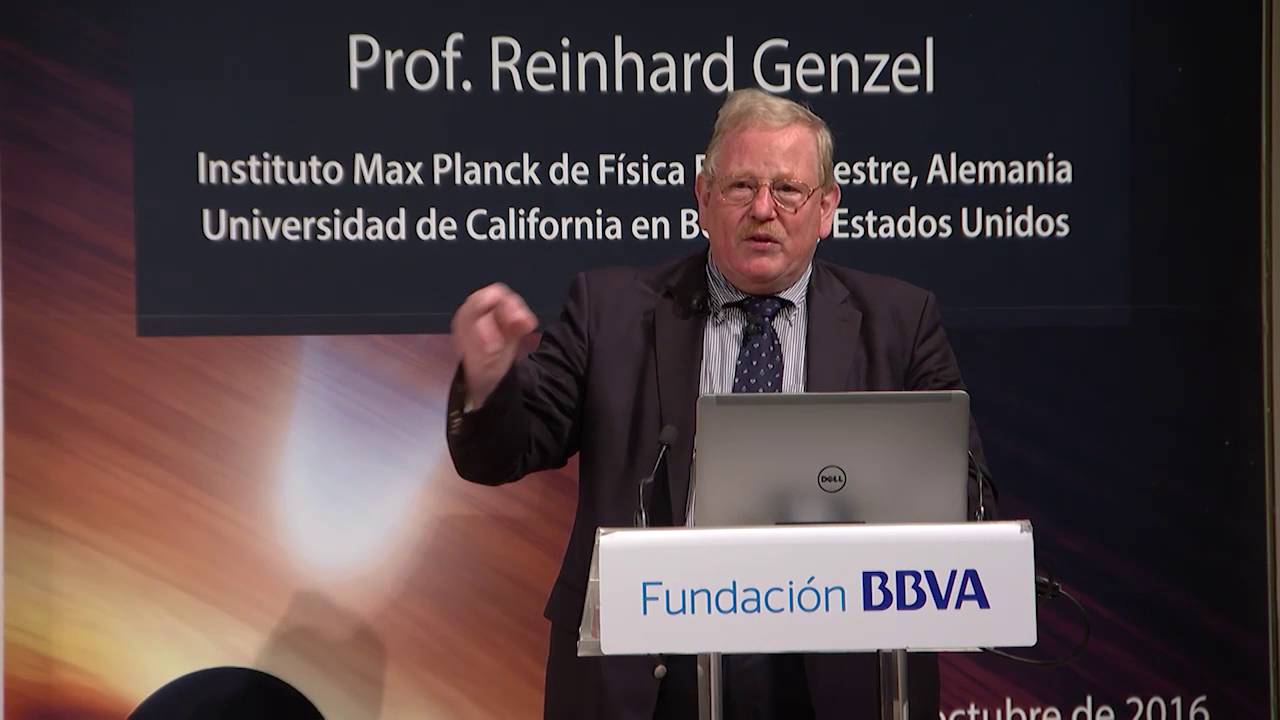Nobel Prize in Physics for Reinhard Genzel, speaker in the Astrophysics Lecture Series ‘Science of the Cosmos, Science in the Cosmos’
Cosmologists Roger Penrose, Reinhard Genzel and Andrea Ghez have won the 2020 Nobel Prize in Physics for their landmark discoveries relating to black holes. On half of the award goes to Penrose, at the University of Oxford, “for the discovery that black hole formation is a robust prediction of the general theory of relativity,” while the other is shared by Genzel, of the Max Planck Institute, and Ghez, of the University of California, “for the discovery of a supermassive compact object at the center of our galaxy,” the Milky Way. In 2016, Professor Genzel delivered a lecture on this subject as part of the BBVA Foundation Lecture Series on Astrophysics, ‘Science of the Cosmos, Science in the Cosmos.’ To mark his receipt of the Physics Nobel, we are offering the full video of his talk, which you can see by pressing Play on the above image.
6 October, 2020
The black hole at the center of the Milky Way is technically an astronomical radio source known as Sagittarius A-star, or Sgr A* for short, which appears intensely bright when observed with radio telescopes. It is, however, entirely opaque to visible-light telescopes, because the Galactic Center is full of obscuring dust. It was first discovered, using radio telescopes, in the mid-1970s, but it was not until the end of the last decade that its true nature was confirmed.
In his talk, titled Galaxies and Black Holes, the German astrophysicist traced the history of Sgr A*, discussing what was known about it and the implications of that knowledge. Among them, the fact that the Genzel team’s observations provided what he called “the best evidence to date in astronomy” that these giant cosmic sinkholes lie at the center of most galaxies.
As Professor Genzel explained in his talk, it took over twenty years of increasingly precise observations to confirm that Sagittarius A-star was indeed a gigantic black hole. The existence of supermassive black holes was already being speculated on in the mid-1960s, after the discovery of a series of very bright but also distant sources, their enormous luminosity owing, it was supposed, to the energy released by matter falling towards an immensely large object. “However, direct proof of their existence,” Genzel pointed out, “would involve measuring [the gravitational potential] as close as possible to the hole itself.”
It was precisely this kind of measurement that Genzel began working on in the late 1980s. He and his group developed instrumentation that combined superior precision with the ability to receive light from dust-filled regions, and installed it in the world’s most advanced telescopes. Now scientists were able to measure the orbits of numerous stars in the galactic core.
In 2010 the group summarized its results in a paper which affirmed: “the Galactic Center is a unique astrophysical laboratory for studying in unparalleled detail the properties and evolution of gas and stars in a galactic nucleus (…) Evidence is presented, from the analysis of the orbits of more than two dozen stars and from the measurements of the size and motion of the central compact source, Sgr A*, that this radio source must be a massive black hole of about 4.4 million solar masses, beyond any reasonable doubt (…)”.
In an interview granted to the BBVA Foundation on the occasion of his lecture, reproduced in the video below, Professor Genzel explained why he is so convinced that “black holes are essential for understanding the evolution of the galaxies.”
Interview with Reinhard Genzel: Galaxies and massive black holes
From 2011 to 2018, the “Science of the Cosmos. Science in the Cosmos” lecture series – led by Ana Achúcarro, Professor of Theoretical Physics at Leiden University (Netherlands) and the University of the Basque Country UPV-EHU – explored some of the main open questions in astrophysical research. Experts from the top ranks of the world scientific community shared their vision of the origins of the Universe, the search for life on other planets, how chemical elements are forged in the heart of stars, or the nature of dark matter and energy. All talks in the series are available to view via the following links on the BBVA Foundation YouTube channel: 1st edition (2011-12) / 2nd edition (2012-13) / 3rd edition (2013-14) / 4th edition (2015) / 5th edition (2016) / 6th edition (2017-18) .

